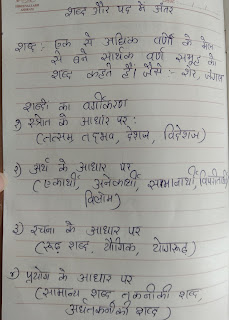IX A Science-Is Matter around us pure
Solution constitutes of two types of substances, a solute and a solvent.
Solution = Solute + Solvent
Solvent – The substance in which another substance is mixed is called the Solvent. For Example, Water is a solvent in which we can mix different substances such as salt or sugar.
Solute – The substance that is added to the solvent to form a solution is called a Solute. For Example, Salt, when mixed in water, acts as a solute for the mixture.
Properties of a Solution:
A solution is a homogenous mixture.
We cannot see the particles of a solution through naked eyes as they as are small as 1 nanometer in diameter.
The path of light is not visible through the solution. The particles of a solution do not scatter light through them as they are extremely small.
We cannot separate the particles of a solution by methods of filtration.
What is a stable solution?
A stable solution is a solution in whose particles do not settle down if we leave the solution undisturbed for some time. This is because the particles of a stable solution are homogeneously spread.
Different Types of Solutions
Dilute – A solution in which the concentration of the solute is much less than that of the solvent. For Example, If we mix 1gm of salt in 500 ml of water, the salt solution thus obtained will be diluted. If we keep on adding the solute in a solution there comes a point when no more solute dissolves in the solution. This is called the Saturation Point of a Solution.
Unsaturated Solution – A solution, in which we can add more amount of solute as it has not achieved its saturation level yet, is called an Unsaturated Solution. A dilute solution can be called as an Unsaturated Solution.
Concentrated Solution – A solution with a large amount of solvent is called a Concentrated Solution.
Saturated Solution – A solution in which no more solute can be added since it has already dissolved the maximum amount of solute it can is called a Saturated Solution.

What is concentration?
Concentration refers to the amount of a substance per defined space or can be defined as the ratio of solute in a solution to either solvent or total solution.
To calculate the concentration consider the formulae below:
Percent by Mass = (Mass of solute / Mass of solution) X 100
Percent by Volume = (Volume of solute / Volume of solution) X 100
Molarity (M) = Number of moles of solute / Volume of Solution in litres
Where, Moles of solute = Given mass / molar mass
Molality (m) = Moles of solute / weight of solvent in kg
Normality (N) = Number of mole equivalents/ volume of solution in litres
= Mass of solute / (equivalent mass * volume of solution in Litres)
ppm (Parts Per Million) = ( Mass of Solute / Mass of Solvent ) * 106
Mole FractionSOLUTE = Moles of Solute / Total Moles of Solution
Mole FractionSOLVENT = Moles of Solvent / Total Moles of Solution
Mole FractionSOLUTE + Mole FractionSOLVENT = 1
What is a suspension?
A suspension is formed when two or more substances are mix in a non-uniform manner. Heterogeneous mixtures are suspensions. The solute does not mix with the solvent and can be viewed through naked eyes.
Properties of Suspensions:
A suspension is a heterogeneous mixture.
We can see the particles of suspensions through naked eyes.
We can see the path of light through the particles of a suspension.
The particles of suspension tend to settle down when left undisturbed. Then, they can be separated using filtration.
What are colloids or colloidal solutions?
A colloidal solution or a colloid is a uniform solution of two or more substances. The particles are relatively very small that the solution appears as a homogeneous mixture but it is not.
Properties of colloids:
Colloids are heterogeneous in nature.
The particles of a colloid cannot be seen through naked eyes.
The particles scatter a beam of light passed through a colloid and produce Tyndall effect.
Colloids are stable in nature. The particles of colloids do not settle down if left uninterrupted.
We cannot separate the particles of a colloid through filtration. We use a method called Centrifugation to separate the particles of a colloid.

What is the Tyndall Effect?
When a beam of light is passed through a colloid the particles of the colloid scatter the beam of light and we can see the path of light in the solution. For Example, when a ray of light enters a dark room it is scattered by the dust particles present in the air and we can see the path of light clearly.

Classification of Colloids
Dispersed Phase – The dispersed particles or the solute-like components in a colloid
Dispersing Medium – The substance in which these solute-like particles are added
Based on the state of the dispersing medium colloids are classified as:
How to separate components of a mixture?
We can separate the heterogeneous mixtures into their constituents by means of physical methods like:iltration
Hand-picking
Sieving
The components of a mixture can be separated from each other using several other techniques like:
Evaporation
Centrifugation
Sublimation
Chromatography
Distillation
Homework- Read the Chapter carefully.
